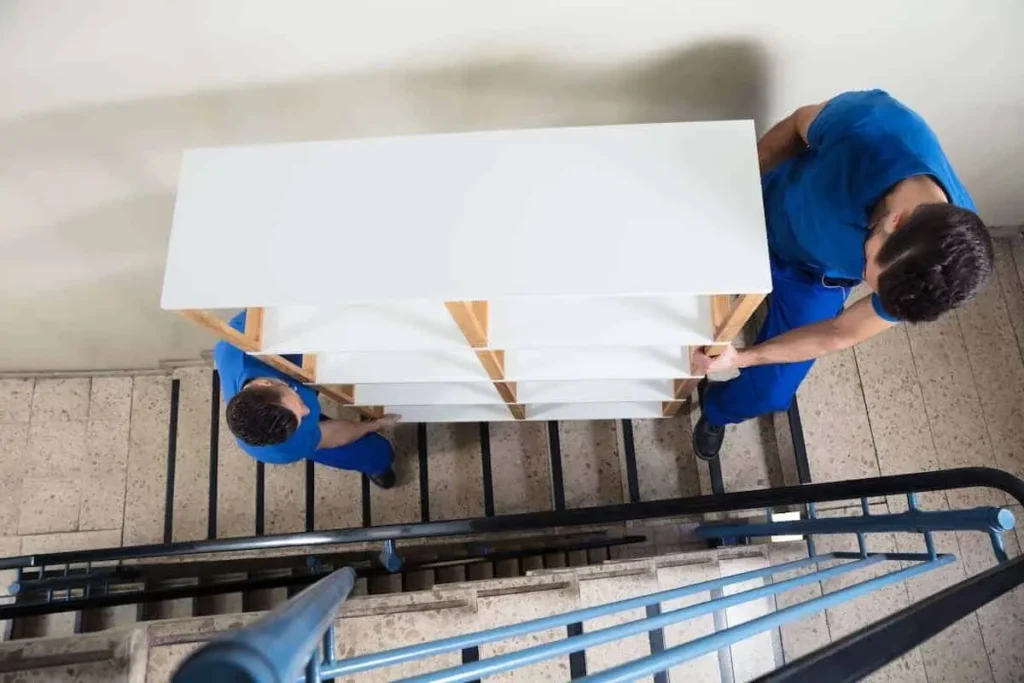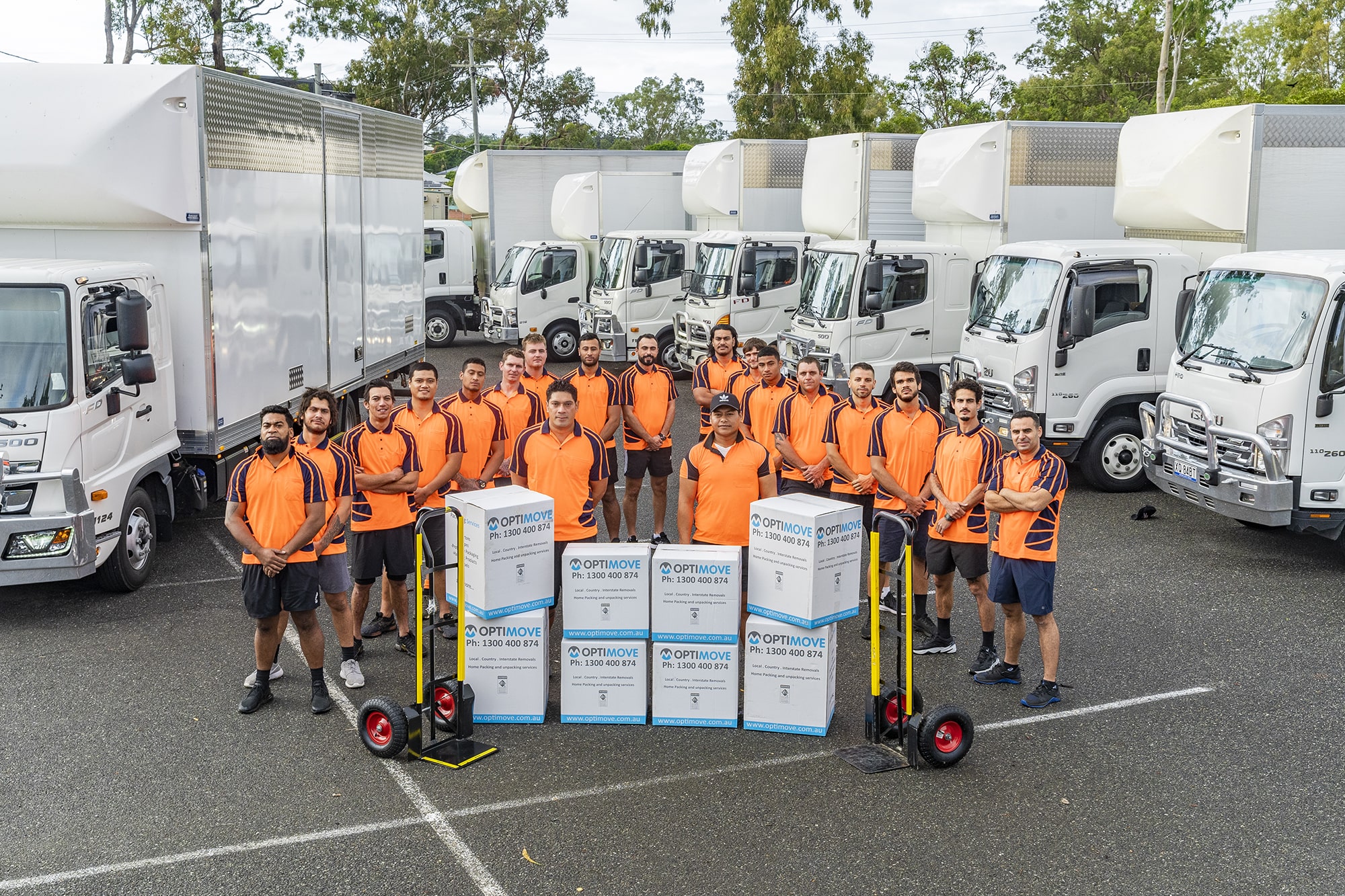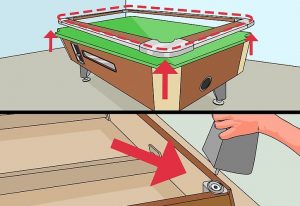Moving With Stairs: Navigating a Tricky Relocation
The adventure of relocating to a new house is both thrilling and demanding. Dealing with stairs is one factor that can complicate the process. Moving into a building with stairs or a place with multiple stories is more complex than moving into a single-story home. Yet, the stairs may be overcome, and a successful transfer accomplished with some forethought and preparation. Important information about moving with stairs is provided in this article.
Assess the Situation
Before tackling a move involving stairs, it’s crucial to assess the situation thoroughly. Take the time to evaluate the layout of both your current and new homes. Measure doorways, hallways, and staircases to ensure that your furniture and belongings can be maneuvered through them.
Identify any potential challenges, such as tight corners or narrow staircases, which may require special attention. Consider the weight and size of your items to determine if disassembly or alternative transportation methods are necessary.
Having an idea of the obstacles you’ll face will help you get ready for them in advance. Evaluate the number of stairs involved, their width, and any potential obstacles or tight corners. You can gauge the challenge and prepare appropriately with this data.
Declutter and Downsize
Downsizing your stuff and removing unnecessary items is a great way to prepare for a move. Before the move, take the time to go through your items and assess what you truly need and what can be let go.
Reduce the number of objects you need to carry as much as possible before ascending or descending a flight of steps. It’s time to review your stuff and decide what to retain, sell, and throw away. By reducing the number of items you need to move, you can do so with less effort and expense.
Sort your belongings into categories such as keep, donate, sell, or discard. Consider the size and weight of each item, as well as its practicality in your new space. Remember, the less you have to move, the easier it will be to navigate the stairs. Donate or sell items that are in good condition but no longer serve you, and responsibly dispose of any items that are no longer usable. Not only will downsizing make the moving process smoother, but it will also help you start fresh in your new home with a more streamlined and organized living space.
Plan Your Moving Strategy
Developing a well-thought-out moving strategy is essential when dealing with stairs. It requires careful planning to ensure a smooth and successful relocation. Start by creating a detailed moving plan that includes a timeline, tasks, and necessary resources. Measure the dimensions of doorways, hallways, and staircases in both your current and new homes to determine if any furniture or large items need disassembly. Determine how much space you have in tight spaces, including low hanging lights, straight staircases, stairway wall, and other tight spaces.
Consider the weight and bulkiness of your furniture pieces, household items and appliances to determine the best approach for moving heavy furniture safely. Enlist the help of friends, family, or professional movers, ensuring everyone understands their roles and responsibilities. If necessary, rent or purchase equipment like dollies or furniture sliders to aid in the moving process. You would need to buy supplies like moving straps, floor runners, soft covers, shoulder dolly, and other moving supplies. Organize your belongings in clearly labeled boxes to make unpacking easier. By planning your moving strategy in advance, you’ll be better prepared to navigate the challenges of moving with stairs and ensure a successful relocation.
Consider the following points:
-
Create a detailed moving plan
Outline the logistics of your move, including the timeline, tasks, and responsibilities. This plan will help you stay organised and ensure that nothing is overlooked.
-
Measure large items
Measure your furniture and other large appliances to determine if they will fit through the stairwell. If not, you may need some disassembly for moving furniture upstairs or consider alternative moving methods, such as using a crane or hoisting them through a balcony or window.
-
Protect your floors and walls
Stairs can be prone to scratches and dents during a move. Use protective coverings such as moving blankets, cardboard, stair edge guards, or plastic wrap on the stairs, walls, and floors to prevent damage. This extra precaution will preserve the condition of your new and old homes.
Pack strategically for Moving furniture upstairs
When faced with the challenge of moving furniture upstairs, packing strategically becomes essential. Use sturdy moving boxes and packing materials to secure your belongings. When packing, keep in mind that you’ll be carrying these boxes up and down stairs. Try to keep the weight of each box manageable, so it’s easier to lift and carry. Pack heavier items in smaller boxes and lighter items in larger boxes.
Here are some tips to make the process smoother:
Use sturdy boxes
Opt for high-quality moving boxes that can withstand the weight and won’t collapse during transport. Reinforce the bottom with packing tape for added strength.
Distribute weight evenly
Pack heavier items at the bottom of the boxes to provide stability. Lighter items should go on top. This arrangement will make it easier to carry the boxes up and down stairs.
Label and organize
Clearly label each box with its contents and the room it belongs to. This will save you time and effort when unpacking. Group boxes by room to streamline the process.
Secure fragile items with bubble wrap
Use bubble wrap, packing paper, or blankets to protect delicate items. Fill empty spaces in boxes with packing material to prevent shifting and minimize the risk of damage.
Pack an essentials box
Prepare a separate box with essential items you’ll need immediately upon arrival at your new home. This can include toiletries, a change of clothes, basic kitchen supplies, and important documents.
Enlist help
Moving furniture upstairs can be physically demanding. If you have heavy furniture or bulky items, hiring professionals experienced in navigating stairs is worth considering. They know what they’re doing and have the tools to deal with dangerous circumstances effectively and safely.
It’s essential to enlist the help of others. Here’s why:
Friends and family
Reach out to friends and family members for assistance. They can provide an extra set of hands to help carry heavy items up and down the stairs. Make sure to communicate the details of the move in advance and express your gratitude for their help.
Professional movers
Consider hiring movers experienced in navigating stairs. They have the expertise and equipment to handle the challenges effectively, ensuring a smooth and safe relocation. Research reputable moving companies and obtain quotes to find the best option for your needs.
Moving labor services
If you prefer a more flexible approach, you can hire moving labor services. These services provide experienced movers to assist with specific tasks such as loading and unloading heavy items, reducing the physical strain on yourself.
Remember, enlisting help not only eases the physical burden but also minimizes the risk of injuries and damage to your belongings. Plan ahead and coordinate schedules to ensure a successful and stress-free move with the assistance of others.
Ensure everyone involved is on the same page by clearly communicating your moving plan and expectations. Working together will reduce stress levels and increase efficiency at every stage of the move.
Gather the Right Tools and Equipment
Appropriate moving equipment can make a significant difference when dealing with stairs. Some essential tools and supplies to consider include:
Moving dolly or hand truck
These devices allow you to quickly move heavy items and reduce the risk of injury. Opt for a dolly with stair-climbing capabilities for added convenience.
Furniture sliders for heavy furniture
These handy tools help you glide furniture along the floor, making it easier in moving furniture upstairs.
Straps and ropes
Securely fastening items to a dolly or hand truck using straps or ropes will provide stability and prevent accidents while navigating stairs.
Moving boxes and packing supplies
Opt for sturdy boxes that can withstand the weight and properly protect your belongings. Use bubble wrap, packing paper, self adhesive plastic film, plastic wrap and foam inserts to secure fragile items.
Take Safety Precautions
Safety should be a top priority during your move. Here are some safety precautions to follow when moving with stairs:
Wear proper footwear
Choose comfortable and sturdy footwear with good traction to prevent slipping and ensure stability while navigating the stairs.
Take breaks when needed
Moving can be physically demanding, especially when dealing with stairs. Take regular intervals to rest and hydrate to avoid exhaustion and maintain your energy levels.
Clear the path
Before moving any items, ensure that the stairwell and pathways are clear of obstacles. Remove any loose rugs, clutter, or tripping hazards to prevent accidents.
Have a first aid kit on hand
Accidents can happen, so it’s important to have a well-stocked kit readily available. Include basic supplies such as bandages, antiseptic ointment, and pain relievers.
Lift with proper technique and aids
When carrying heavy items up or down the stairs, practice proper lifting techniques to avoid strain or injury. Bend your knees, lift with your legs, and keep your back straight. Take breaks if needed, and don’t hesitate to ask for help if an item is too heavy or awkward to handle alone.
Depending on the situation, you may need to use specialized equipment such as dollies, furniture sliders, or hand trucks to transport heavy items up or down the stairs. You can also make use of old blankets to protect a heavy object. These tools can make the process much easier and reduce the risk of injury.
When moving with stairs, it’s crucial to prioritize your safety by using proper lifting techniques and aids. Here’s how:
Bend your knees and lift with your legs
Avoid putting excessive strain on your back by bending your knees and using the strength of your leg muscles to lift items. Maintain a straight back throughout the lifting process.
Get a good grip
Ensure you have a secure grip on the item you’re lifting before attempting to move it. Use handles, straps, or grips if available to maintain control and stability. It is vital that a mover handles firmly with any bulky piece.
Use lifting aids
Consider using equipment such as dollies, hand trucks, or furniture sliders to assist with heavy or bulky items. These tools can save time, make the process easier and reduce the risk of strain or injury.
Take breaks
Moving with stairs can be physically demanding, so take regular breaks to rest and recover. Overexertion can lead to fatigue and increase the risk of accidents.
Seek assistance for heavy items
Don’t hesitate to ask for help when dealing with exceptionally heavy or awkwardly shaped items. Involve others to share the load and ensure a safer moving experience.
By lifting with proper technique and utilizing lifting aids, you’ll protect yourself from unnecessary strain and reduce the risk of injury during the moving process. Prioritize your well-being and make use of available tools to navigate the stairs with ease.
Be Mindful of Moving Insurance
When moving with stairs, there is a greater risk of damage to your belongings or property. Ensure that your moving insurance coverage is adequate and includes protection against potential accidents or mishaps on stairs. Review the terms and conditions of your policy or consult with your moving company to understand the extent of your coverage.
When moving with stairs, it’s crucial to be mindful of your moving insurance coverage. Here’s what you should consider:
Review your existing insurance
Check your homeowner’s or renter’s insurance policy to understand what coverage it provides during a move. Some policies may offer limited coverage for your belongings during transit, including stairs. Take note of any specific exclusions or limitations.
Inquire about additional coverage
If your existing insurance doesn’t provide sufficient coverage for your move, consider purchasing additional moving insurance. Many moving companies offer their own insurance options to protect your belongings during transit, including any potential risks associated with navigating stairs.
Read the fine print
Before purchasing any additional insurance, carefully read and understand the terms and conditions, including coverage limits, deductibles, and any exclusions. Pay attention to the specific details related to moving with stairs to ensure you’re adequately protected.
Document and photograph your belongings
Before the move, document and photograph your valuable or fragile items. This documentation can serve as evidence in case you need to file a claim for damages during the move.
Being mindful of your moving insurance ensures that your belongings are protected during the relocation process, including any challenges associated with stairs. Review your insurance coverage, consider additional options if necessary, and take the necessary steps to safeguard your possessions throughout the move.
Stay Organized and Label Everything
Proper organisation and labelling are crucial when moving, especially with stairs involved. Making an inventory list might be great assistance to ensure that nothing goes lost in the move. Make sure to mark the contents and destination room on each box. It will be much less of a guessing game for you and your service if you label each box with the room it belongs in.
Maintaining organization and labeling your belongings is crucial when moving with stairs. Here’s why it’s important and how to do it effectively:
Easy identification
Labeling your boxes and furniture helps you quickly identify items and determine where they should be placed in your new home. This saves time and minimizes confusion during the unpacking process.
Efficient placement
Clearly marking boxes with the designated room or area in your new home ensures that they are placed in the right location, reducing the need for additional moving and lifting.
Fragile items
Clearly indicate boxes containing fragile items with labels such as “Fragile” or “Handle with Care.” This alerts you and your helpers to take extra caution when handling those items, especially when navigating the stairs.
Essential items
Pack a separate box or bag with essential items you’ll need immediately upon arrival at your new home, such as toiletries, a change of clothes, and important documents. Label it as “Essentials” for easy access.
Inventory checklist
Maintain an inventory checklist of all your packed boxes and their corresponding labels. This helps you keep track of your belongings and ensures nothing gets misplaced during the move.
By staying organized and labeling everything, you’ll streamline the moving process, prevent confusion, and ensure that your belongings are handled properly while navigating the stairs. Take the time to label your items clearly and maintain an inventory checklist for a smoother relocation experience.
Prepare for Unforeseen Challenges
Despite careful planning, unexpected challenges may arise during your move. Be prepared to adapt and find solutions on the spot. Stay calm, think creatively, and communicate with your team to overcome any obstacles that may come your way.
Moving with stairs can present unforeseen challenges, but with proper preparation, you can tackle them effectively. Here’s how to be ready:
Plan for contingencies
Anticipate potential challenges, such as narrow staircases, and create backup plans. Consider disassembling larger items, removing doors if necessary, or seeking alternative routes when moving furniture upstairs.
Measure doorways and staircases
Take accurate measurements of doorways, hallways, and staircases to ensure moving furniture upstairs can fit through them. This will help you avoid any surprises on moving day.
Protect the stairs and walls
Prioritize protecting the stairs and walls from damage during the move. Use furniture blankets, padding, plastic covers and other protective wrappings to prevent scratches or dents. Securely wrap furniture legs to avoid causing any marks.
Stay flexible
Be prepared to adapt your moving strategy if unexpected challenges arise. Stay flexible and communicate effectively with your moving team to address any issues that may come up.
Allow extra time
Moving with stairs can take longer than a typical move. Factor in additional time for carrying items up and down the stairs to avoid feeling rushed or overwhelmed.
By preparing for unforeseen challenges, you’ll be better equipped to handle any unexpected situations during your relocation. With a proactive approach and flexibility, you can navigate the tricky aspects of moving with stairs with ease.
Celebrate Your Success
Now that you’ve completed your stair-based move, you can relax and take in your new digs. Going up or down flights of stairs is a challenging task. Therefore, you should reward yourself for finishing the move. Relax in your new home and revel in your success for a while.
Conclusion
Moving with stairs can be a challenging and stressful process, but it doesn’t have to be. With the proper preparation and safety procedures, you can make your move up or down the stairs easier and more efficient.
Hiring a professional moving company such as Optimove will ensure that your belongings are moved safely and securely so that you can enjoy your new home without any worries. With their experience and expertise, Optimove will make your move a breeze. So, if you’re planning a move with stairs soon, consider calling Optimove today!








































